Wondering what to eat when you visit Argentina? Here are the most typical Argentinian food dishes that you must try.
Argentina is a foodie’s dream. During my two years living in the country, I ate my way through a variety of dishes, always trying something new.
While the country is known for its high-quality meats and wines, I learned that food in Argentina is so much more than these famed exports. Argentinian food is heavily influenced by its indigenous roots but also by colonial European culture, and food is something to be enjoyed, not just eaten.
So if you’re planning a trip to Argentina, definitely try the steak and wine here – but I’ve also got a long list of other dishes (and a couple of beverages) that you also have to taste. Food is definitely one of the reasons why you should visit Argentina!
This blog post may contain affiliate links, meaning if you book or buy something through one of these links, I may earn a small commission (at no extra cost to you).
Traditional Argentinian food dishes
For a culinary journey through Argentina, these are the iconic Argentinian foods to try when you arrive. Food will play a huge part in your Argentina itinerary.
1. Steak
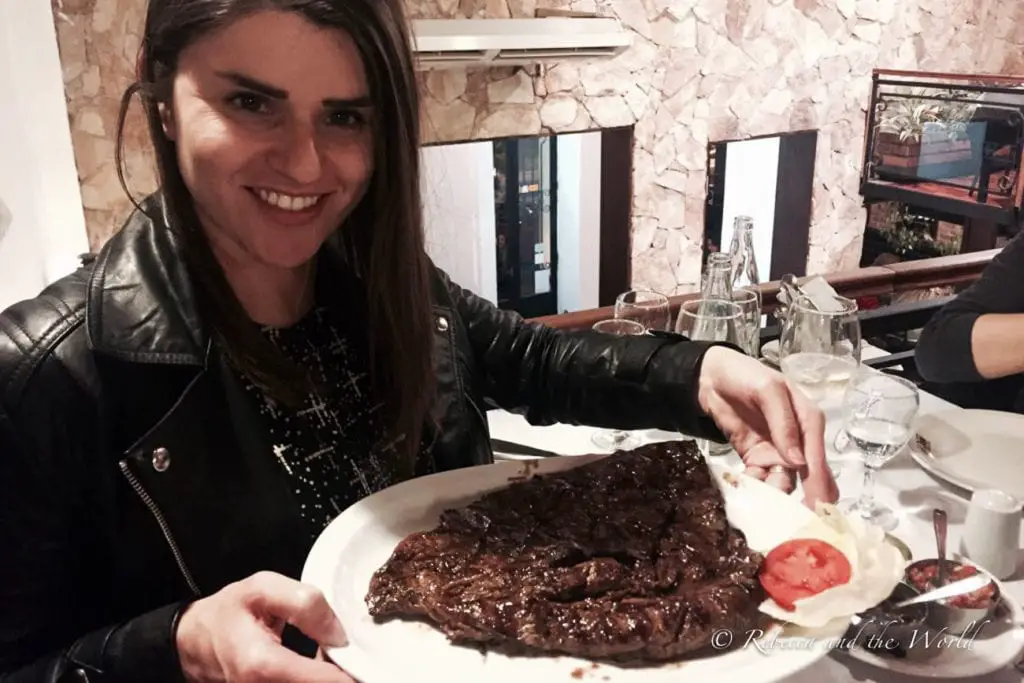
You don’t want to miss out on the steak while you’re in Argentina.
I mean, it’s probably the first thing you thought about when you saw the title of this article, right?
One of the most famous foods in Argentina, the country’s beef is internationally acclaimed, and you’ll soon discover why. Steakhouses dedicate themselves to perfecting this national specialty so it’s juicy, tender and bursting with flavour.
Steak is cooked on a parrilla, a traditional Argentine grill that allows the asador (grill master) to raise and lower the grill for maximum control over the cooking.
Argentina is known for the asado. An asado is the technique of cooking steak, but it’s also a social event that brings together friends and family.
Argentines take their asado seriously and pride themselves on their grilling skills. There’s no better way to experience Argentine culture than by getting an invite to an asado!
In my eating guide, I have quite a few steak restaurants in Buenos Aires. To help you decipher the steakhouse menu, you’ll generally find these cuts of meat:
- Bife de lomo – tenderloin or filet mignon
- Bife de chorizo – sirloin (one of the most popular cuts)
- Entraña – skirt steak (my favourite!)
- Bife ancho – ribeye
- Asado de tira – beef short ribs
- Costillas – baby back ribs
- Costillas de cordero – rack of lamb
Not sure how to order it? Ask for it:
- Jugoso (medium rare)
- A punto (medium)
- Bien cocido (well done)
>> LEARN MORE ABOUT THE ART OF THE ASADO ON THIS PARRILLA TOUR OF BUENOS AIRES! <<
2. Empanadas
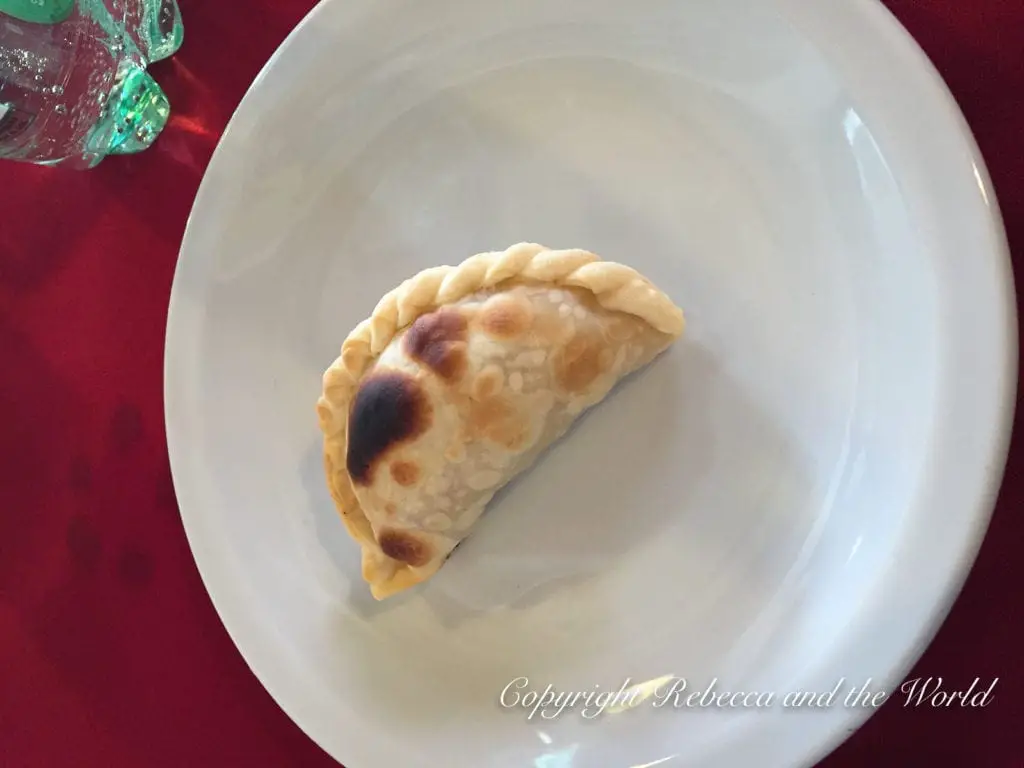
A staple in Argentine cuisine, these savoury pastries (like a small pasty, if you’re from Australia or the UK) can be found everywhere.
They’re typically filled with meats, cheeses, vegetables or all of the above, and either fried or baked. I’m a big fan of humita (corn) empanadas, and I’ll usually choose a fried one, because, well, they’re extra delicious.
They’re also incredibly good value for money, with one empanada setting you back the equivalent of US$1 (depending on the current state of the economy, of course…). Three empanadas can make a meal (or keep you going between meals).
The best part? You can eat them on the go, making them a convenient and delicious snack.
There are different regional varieties, so make sure you try empanadas as you make your way around Argentina. My favourite are empanadas salteñas from the north of Argentina, which are stuffed with beef, hardboiled eggs and potatoes.
3. Parrillada
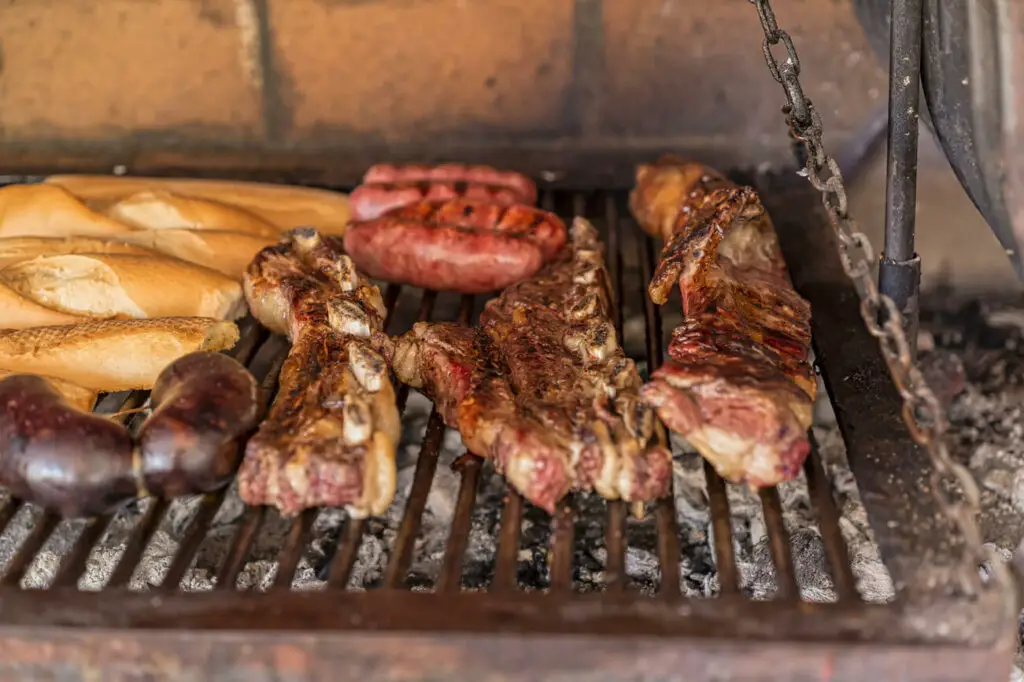
Travelling with a group of friends or family? Order the parrillada in a steak restaurant.
Argentinian food is often designed for sharing, and this mixed grill is no different. It includes different types of meat, such as steak, chorizo and morcilla (blood sausage). Pair it with salad and fries.
Warning: may bring on the meat sweats!
4. Milanesa
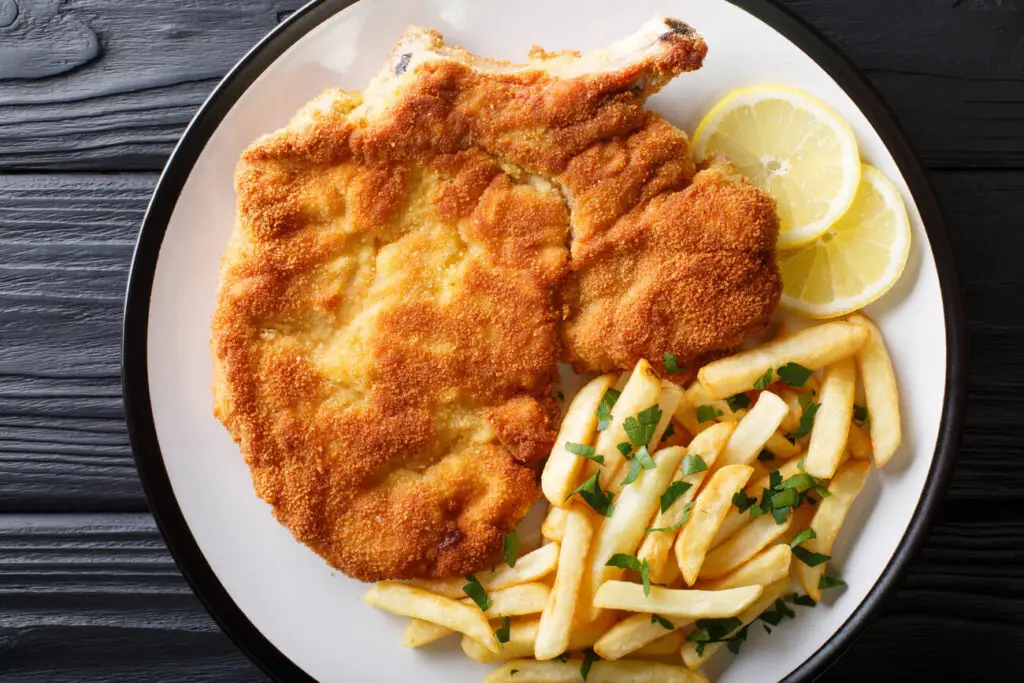
Milanesa is a breaded and fried meat cutlet that’s similar to a German schnitzel. It’s made with chicken, beef or veal and served with mashed potatoes or fries or salad.
This is the ultimate comfort food.
You can try milanesa in a variety of ways. Plain, with nothing on top, or with the addition of popular toppings:
- Milanesa a la Napolitana: topped with tomato sauce, ham and melted cheese
- Milanesa a la Suiza: smothered in white sauce and melted cheese
- Milanesa a la mostaza: covered in a creamy mustard sauce
- Milanesa a Caballo: topped with runny fried eggs (fun fact: caballo means horse, so this translates to something like milanesa riding horseback!)
One of the most popular foods in Argentina, you’ll find milanesas on pretty much every menu.
The best milanesa I had was in a hostería in the Lakes District while we were biking the Ruta de los Siete Lagos. It was huge and golden and freshly cooked by our hosts.
5. Provoleta
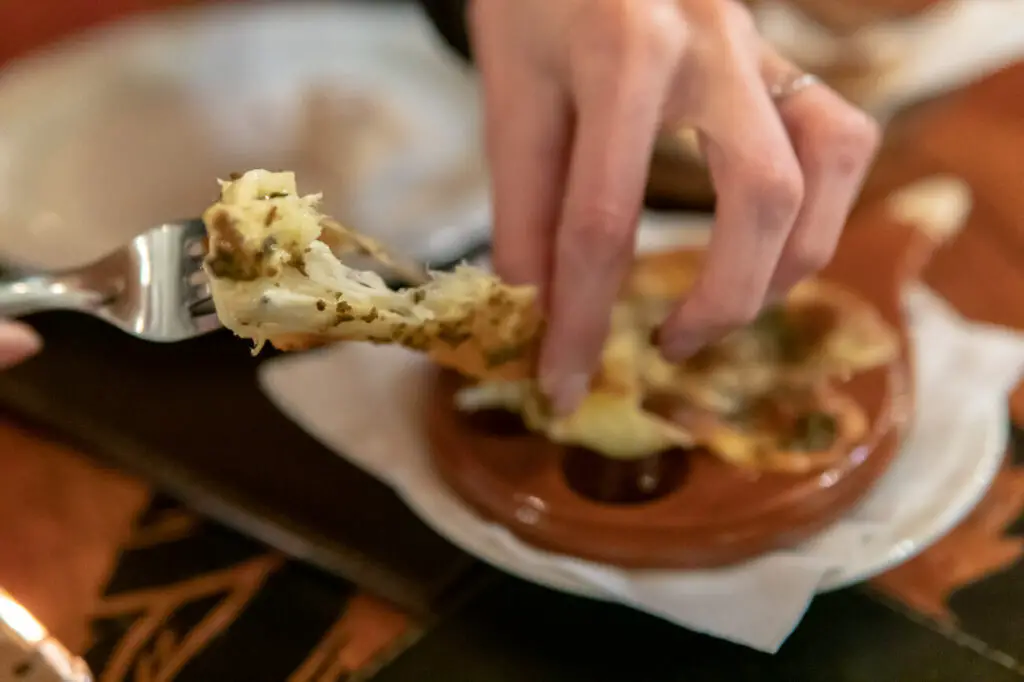
Oh, provoleta. The first time I tried provoleta I thought I’d died and gone to heaven.
This dreamy dish is provolone cheese that is grilled in a small pan on the parrilla until it melts and bubbles.
This is one of the most typical Argentina foods – order this as a starter or side with your steak. It’s simple but delicious and very more-ish.
6. Locro
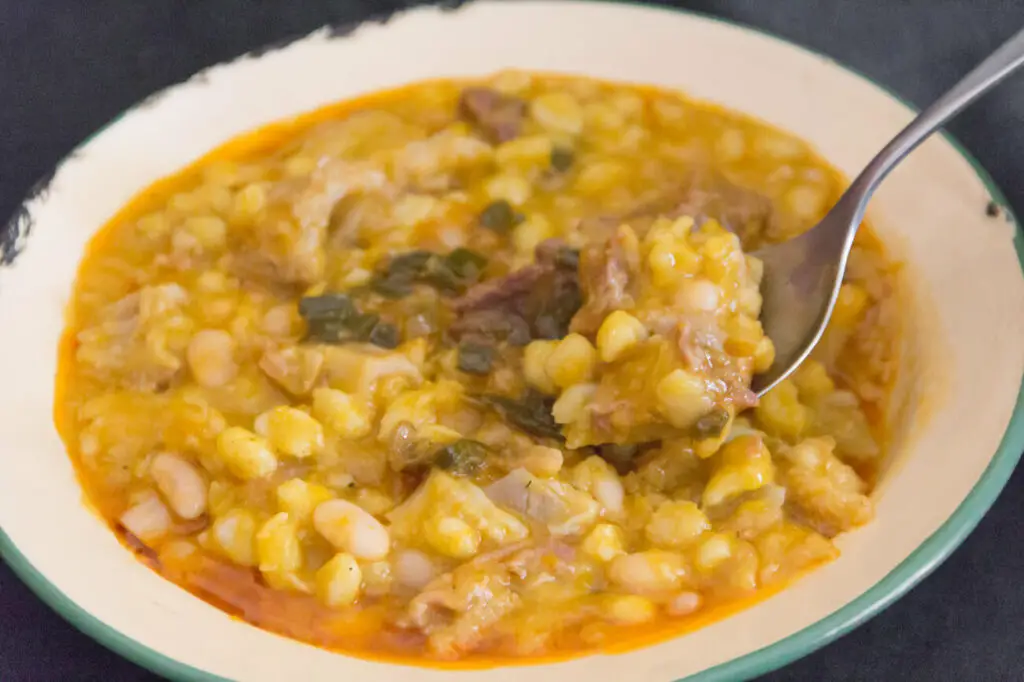
Locro is a hearty stew that’s made with corn, beans, meat and vegetables. It’s filling and comforting and perfect for cold days.
The best locro I’ve had is from rural areas, but it’s easily found in more traditional restaurants in Buenos Aires.
You’ll find this dish everywhere on 25 May, Argentina’s Revolution Day, which commemorates the forming of the first government after the May revolution of 1810.
It can be found in vegetarian form in some places – but not always.
7. Cazuela
Cazuela is a type of soup that is made with meat, vegetables and potatoes. It’s similar to a stew but has a thinner broth.
This is another comforting and hearty winter dish.
The name cazuela comes from the Spanish word for a cooking pot – because this dish is traditionally cooked in an earthenware pot.
8. Guiso de lentejas
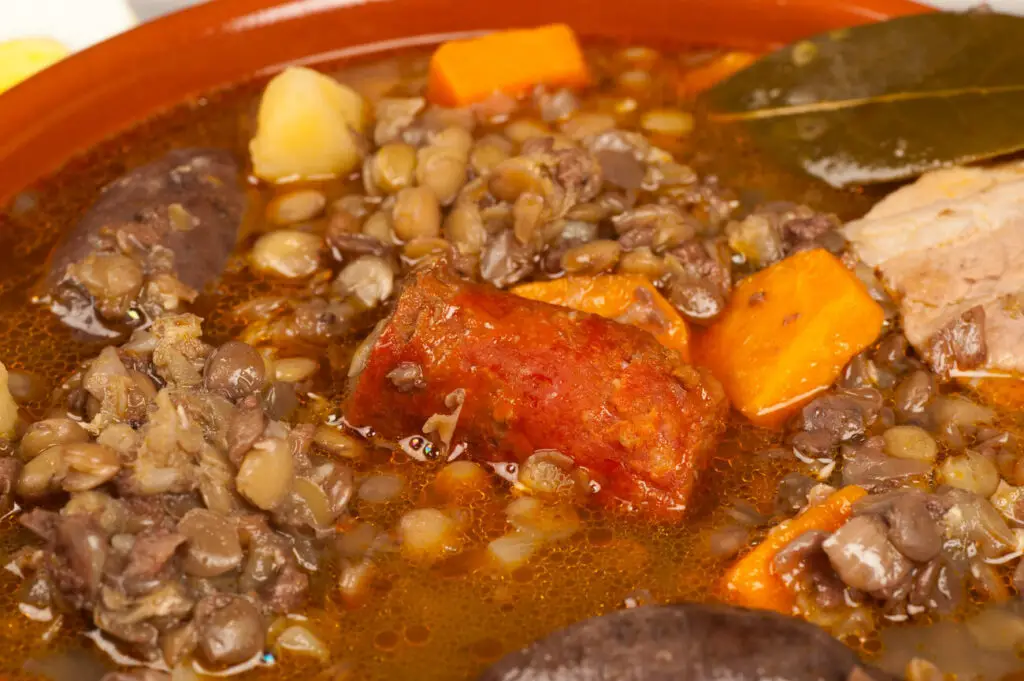
Guiso de lentejas is a lentil stew that is made with meat, vegetables and spices. It’s a healthy and delicious dish – again, perfect for the colder months.
I have seen this dish served without meat in a few restaurants, so look out for it if you’re vegetarian.
9. Humita en chala
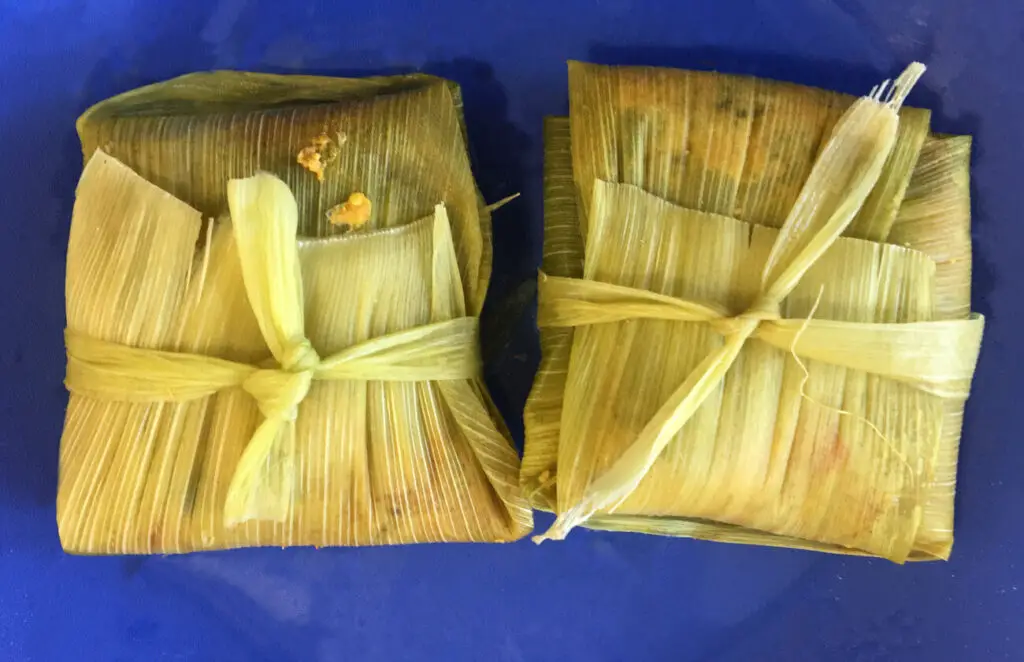
Argentina’s version of tamales, these delicious little packages are made with corn, cheese and spices. It’s wrapped in corn husks and steamed until cooked through.
I’ve only ever seen these a few times on menus in Buenos Aires, so your best bet is to head to the north of the country to try them in places like Salta, Jujuy and the nearby small towns around like Purmamarca, Tilcara and Humahuaca.
10. Chimichurri
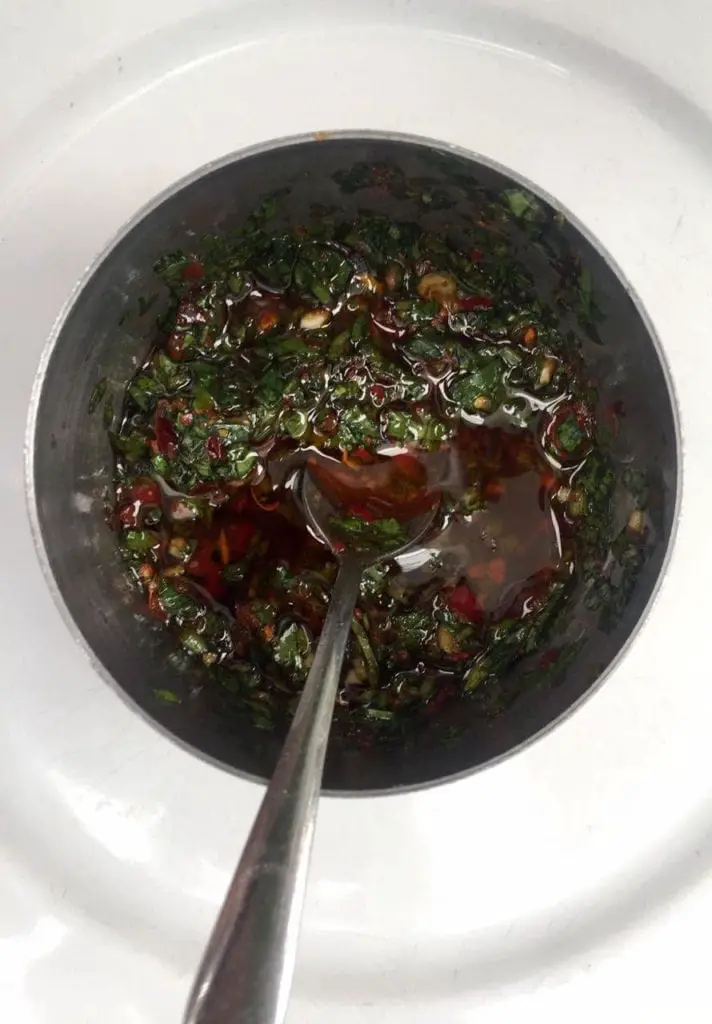
No steak should be served without chimichurri sauce.
While steaks in Argentina are pretty flavoursome on their own, chimichurri sauce – or chimi – adds a whole new level of flavour.
This sauce is made with parsley, garlic, red wine vinegar and oil. For me, the vinegarier the better.
The sauce is not only great with steak – dip bread into it, drip it over empanadas or dollop it onto provoleta.
11. Salsa criolla
Salsa criolla is a type of salsa that’s made with onions, tomatoes and peppers (capsicum). It’s another great sauce for steak or empanadas.
Personally, I hate onions, so I always head straight for chimi, whereas my husband loves salsa criolla.
12. Ñoquis
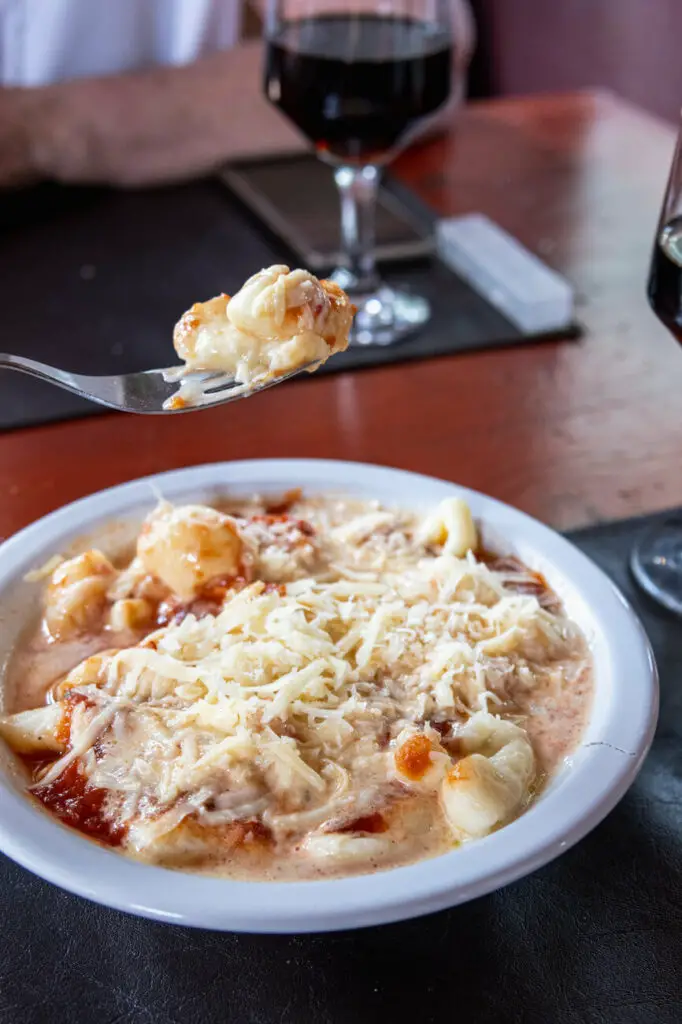
Ñoquis are essentially gnocchi – small potato dumplings. Italian food has a strong influence on Argentinian food, so you’ll find a lot of pastas around the country.
One of the quirkiest traditions in Argentina is “ñoquis day”. On the 29th of every month, it’s considered good luck to eat ñoquis.
The tradition stems back to the time when people got paid on the first of the month, so all that was left in the cupboard at the end of the month was potatoes and flour – the ingredients needed to make ñoquis. Nowadays, it’s just a fun tradition that many Argentines still follow.
13. Choripán
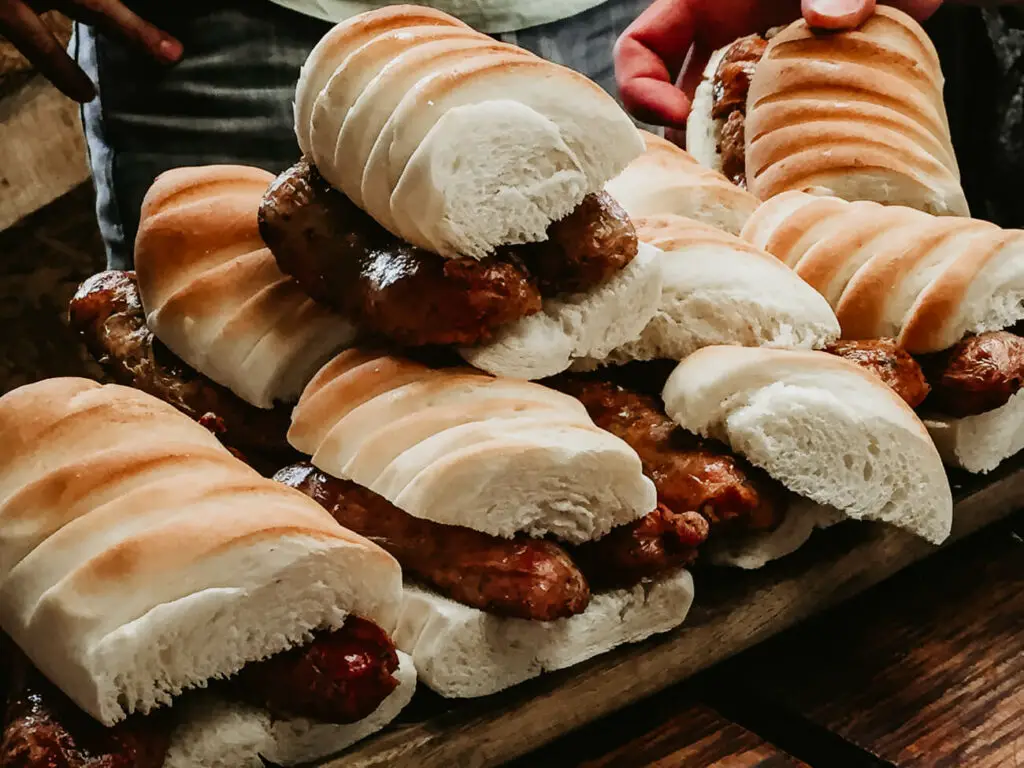
Argentina doesn’t have a lot of street food, but what it does have really packs a punch.
Choripán is a type of sandwich that’s made by stuffing a chorizo sausage in crusty bread. It’s smothered in chimichurri sauce that drips down your fingers as you eat it.
It’s a delicious snack and one of the most popular Argentinian foods to soak up a hangover. You can find plenty of people grilling chorizo on outdoor barbecues along the Costanera Sur in Puerto Madero or Costanera Norte across from Aeroparque airport in Buenos Aires. The Sunday San Telmo Market is another great place to try a choripán right on the street.
14. Patagonian lamb
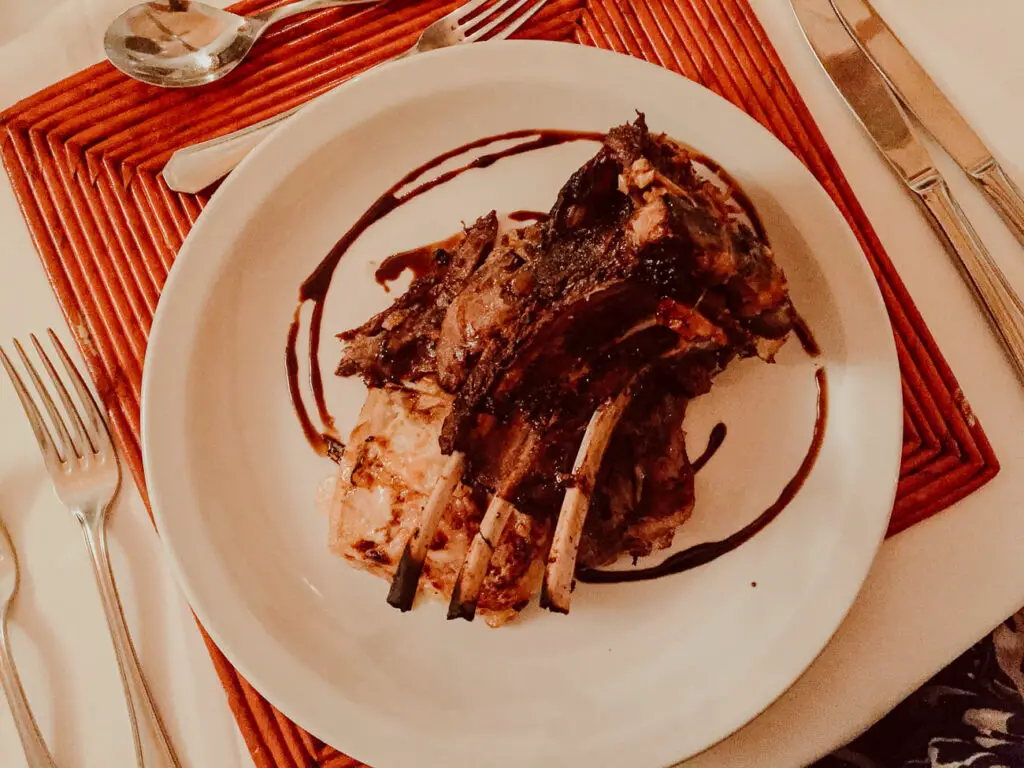
If Patagonia is on your list of places to visit in Argentina, then make sure you try the lamb there.
It’s a specialty of the region. Patagonia is known for its tender and flavourful meat, and you’ll find it on every restaurant menu. It’s typically roasted or grilled on a spit.
A great meal after a long day of hiking in El Chaltén or trekking on Perito Moreno Glacier.
15. Morcilla
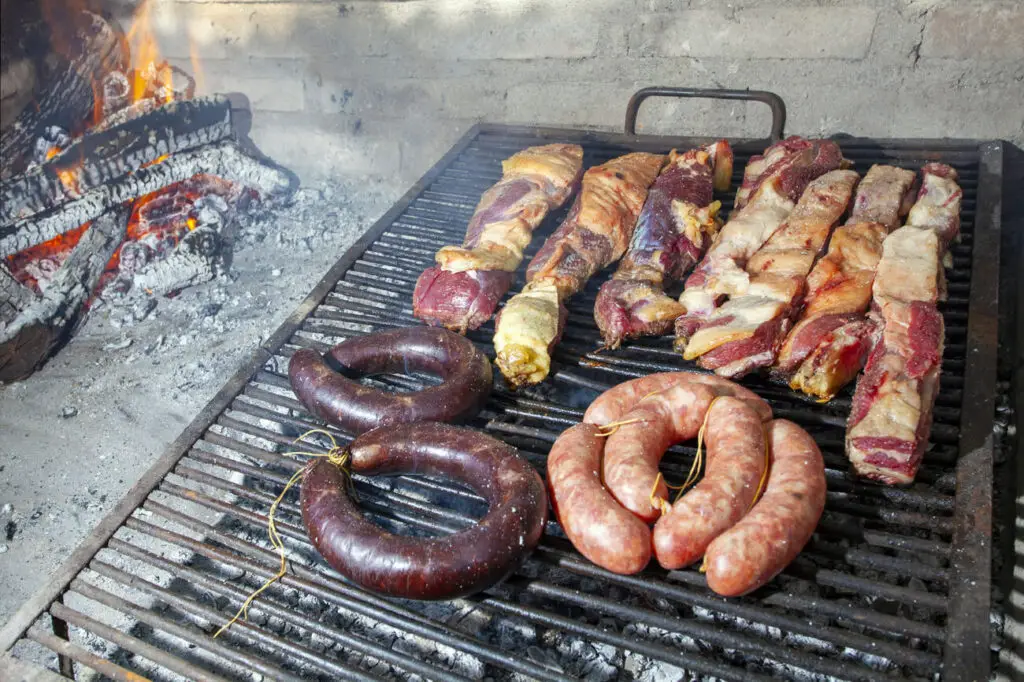
Morcilla is a type of blood sausage that’s made with pork blood and spices. It may sound unappealing, but it’s actually quite delicious.
It’s usually served as a starter or side with steak, but it’s also a common ingredient in many traditional dishes, such as stews.
16. Chinchulines
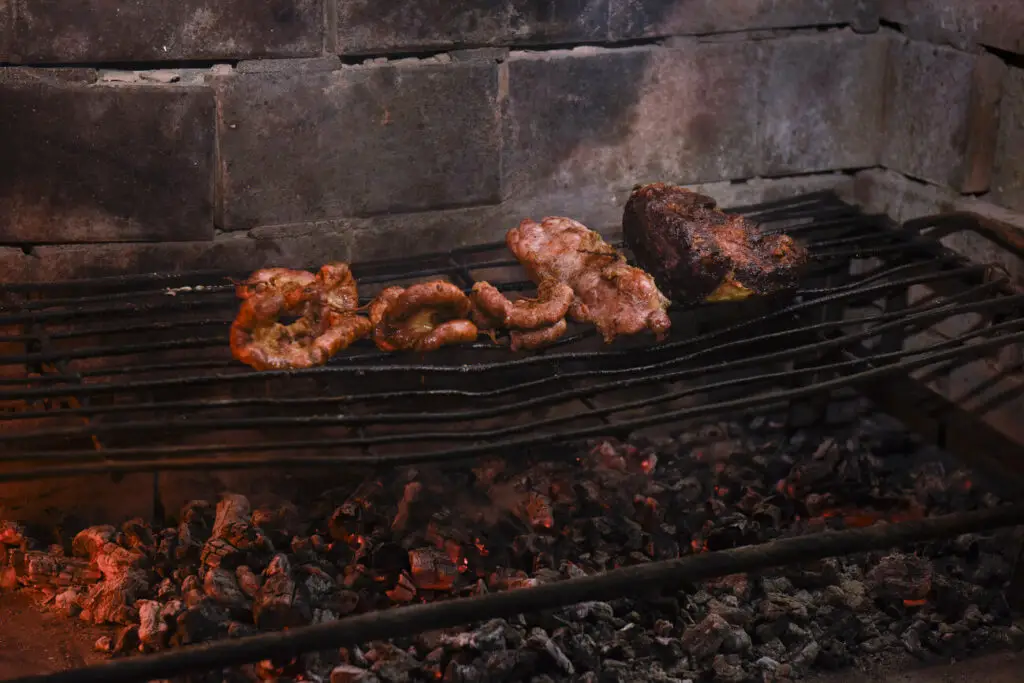
Another dish that shows Argentines don’t waste any part of the animal.
Chinchulines are grilled cow intestines that are seasoned with spices. They’re grilled at high heat so they end up with a crunchy crust – for me, this makes it far easier to eat! You don’t want to eat these if they’re gummy or chewy.
They’re often stuffed with a parsley and garlic stuffing or served simply with lemon juice and salt as a starter ahead of steak.
I have to say, I wasn’t particularly keen to try these, but they’re actually quite tasty.
17. Picada
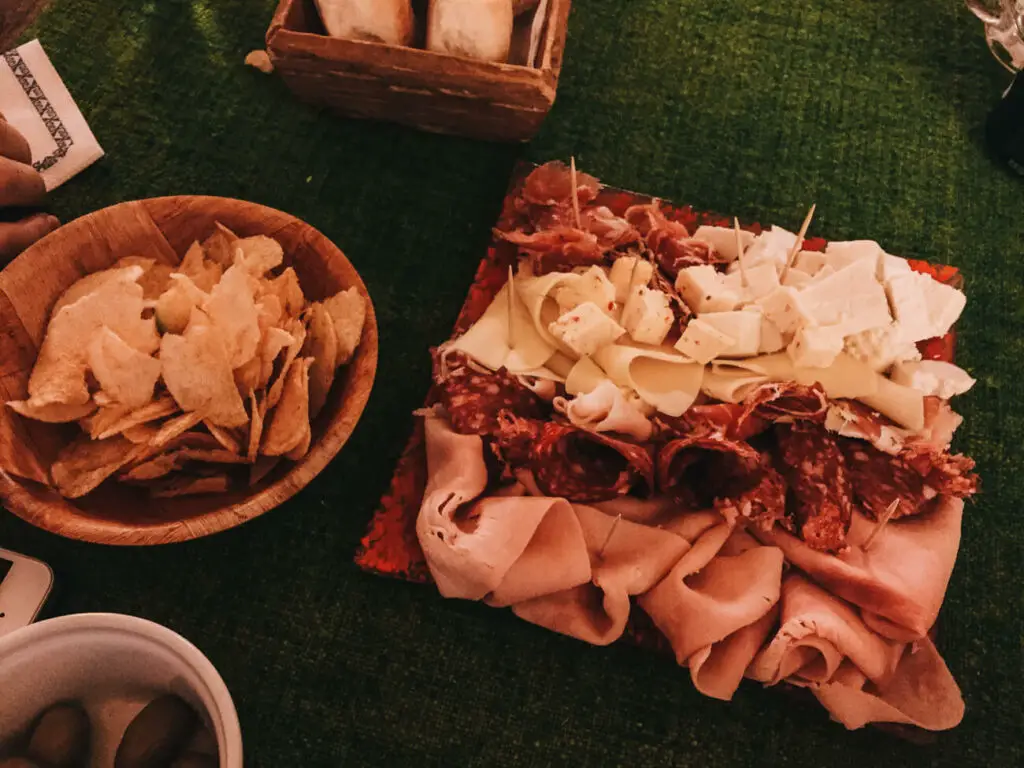
Charcuterie board, I give you the Argentine picada.
This platter includes different types of cured meats, cheeses and olives. Like charcuterie, it’s set out to nibble on ahead of an asado or meal.
I’ve never had picada that’s as fancy as a charcuterie board – they’re pretty simple cheeses and meats – but they’re a great way to snack.
18. Tarta
Sort of like a quiche, a tarta is a type of savoury pie that’s filled with different types of vegetables, cheese and ham or meat.
For vegetarians, this is going to be one of your best options in Argentina, as they’re usually meatless.
You’ll find these tartas in cafes, and they’re great for lunch or a light dinner.
19. Faina
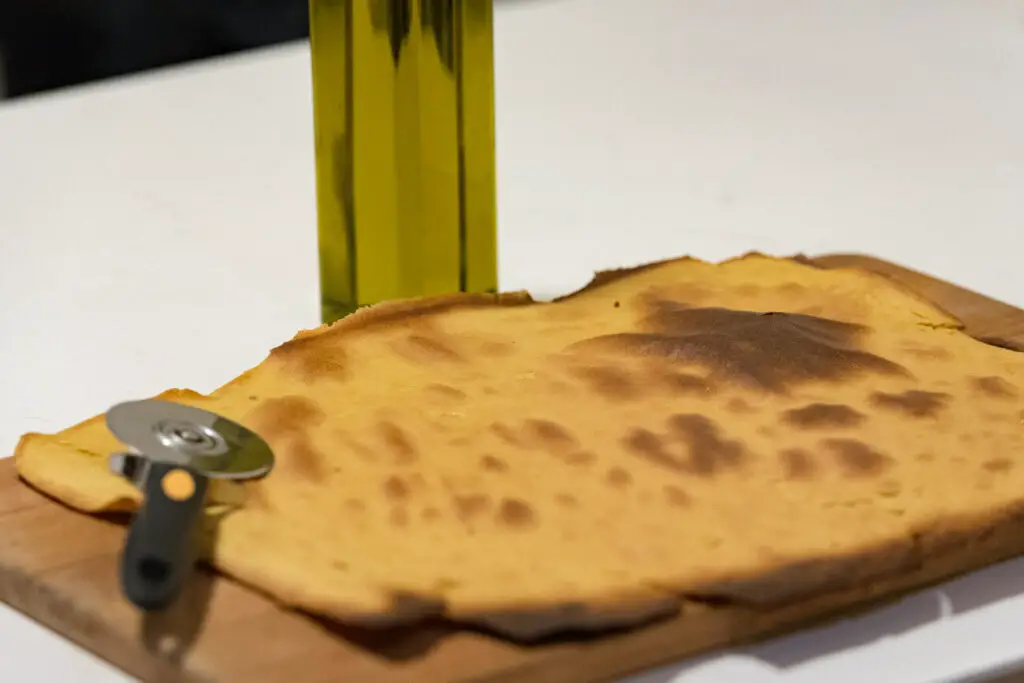
Ever wanted to add something else to your pizza?
I give you faina.
Faina is a chickpea flour pancake that’s slapped on top of your pizza slice so they’re eaten together.
Carbs on carbs.
20. Fugazza

Argentines love their pizza. Thick and cheesy, pizza is often eaten standing up in pizza joints that whip up pizzas at a speedy rate.
Fugazza is a type of pizza made with lots of onions, mozzarella cheese and oregano. There’s no tomato sauce.
Bring your mints!
>> LOVE PIZZA? CHECK OUT THIS PIZZA WALKING TOUR OF BUENOS AIRES! <<
Sweet treats in Argentina
Argentines have a sweet tooth, that’s for sure. When it comes to sweet treats, Argentina has a lot to offer.
In fact, I’ve never had so many fillings as when I lived in Argentina – I was at the dentist more times than I’d like!
Despite that, trying all these delicious sweets is one of the best things to do in Argentina – so forget about your teeth health and give all of these a go.
21. Helado
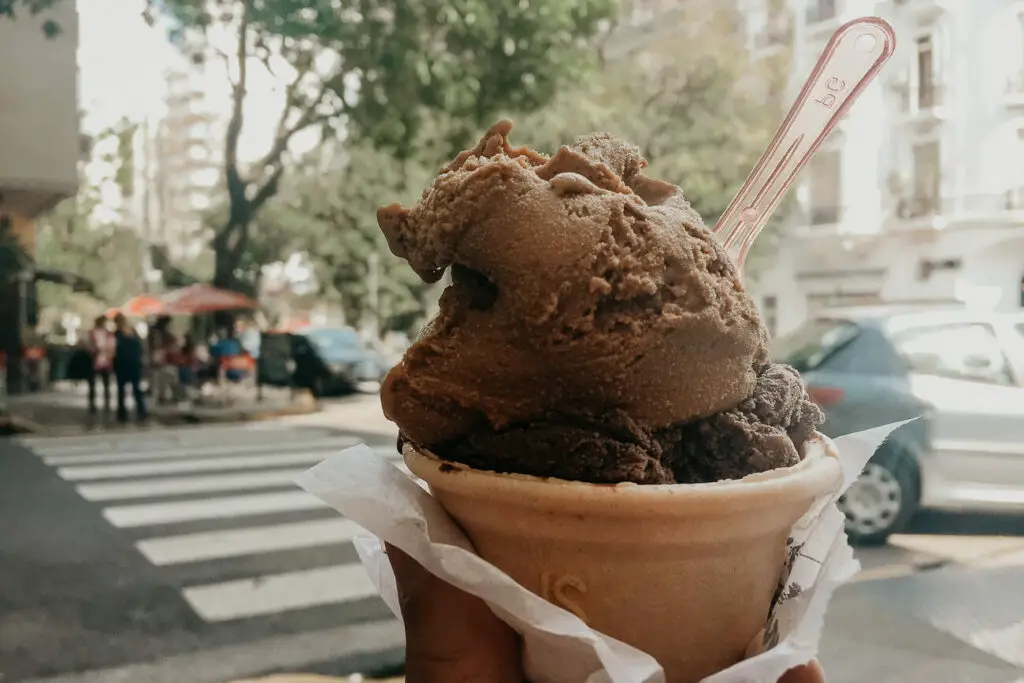
Argentine helado, or ice cream, is one of the most popular foods in Argentina and a must-try for anyone visiting.
Even in winter you should stop for a scoop so that you can experience the creamiest of ice cream.
Helado comes in a wide variety of flavours, from classic vanilla and chocolate to specialities like dulce de leche and mate.
You’ll find a heladería (ice cream shop) on virtually every corner in Buenos Aires. Freddo and Volta are classic franchises, but my favourite is Rapa Nui.
22. Dulce de leche
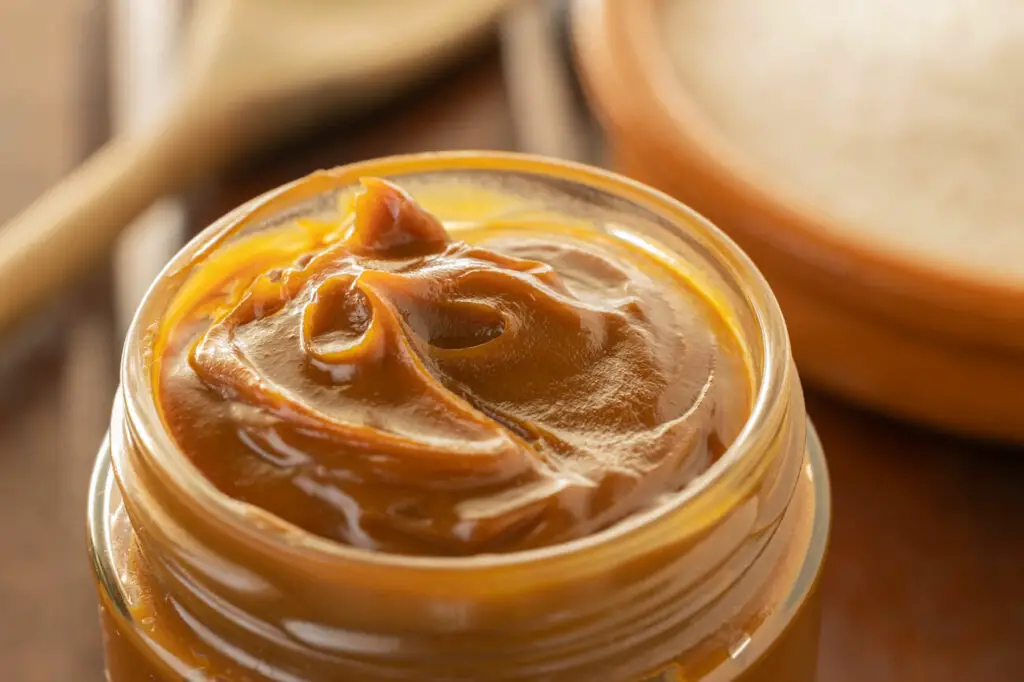
Dulce de leche, a sweet caramel-like spread made from milk and sugar, is a staple in Argentine cuisine. It’s in pretty much every dessert, from alfajores to flan.
You can even eat it on its own. Our fridge was rarely without a jar – although the jar never lasted long, as we’d often be dipping a teaspoon in there for just one more taste.
Dulce de leche makes a great souvenir from Argentina. Pick up jars from the supermarket (the Serenisima brand in estilo campo is my fave) or you’ll find more artisanal versions in upmarket stores.
23. Alfajores
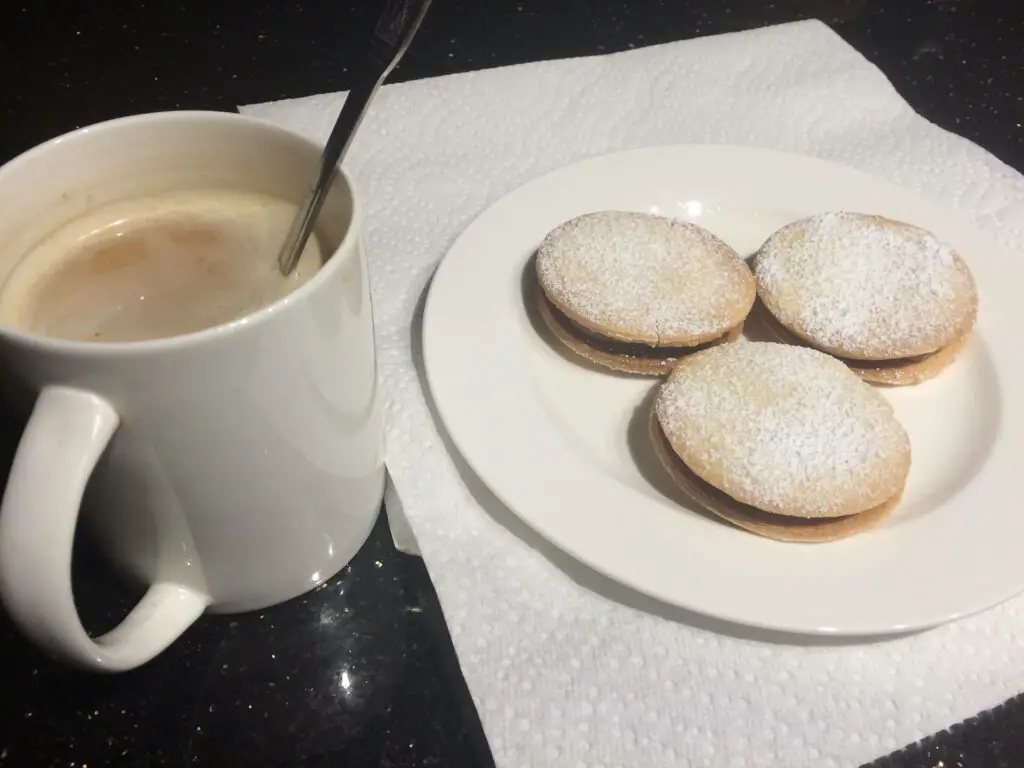
I ate so many alfajores when I lived in Argentina that I couldn’t look at one when I left.
Ha, as if. I could still eat these every day.
Alfajores are shortbread-like cookies sandwiched together with dulce de leche. They’re often coated in chocolate or dipped in coconut.
Personally, I love the Havanna brand but many people swear by Cachafaz (recognisable by their gold wrappers).
24. Pastelitos
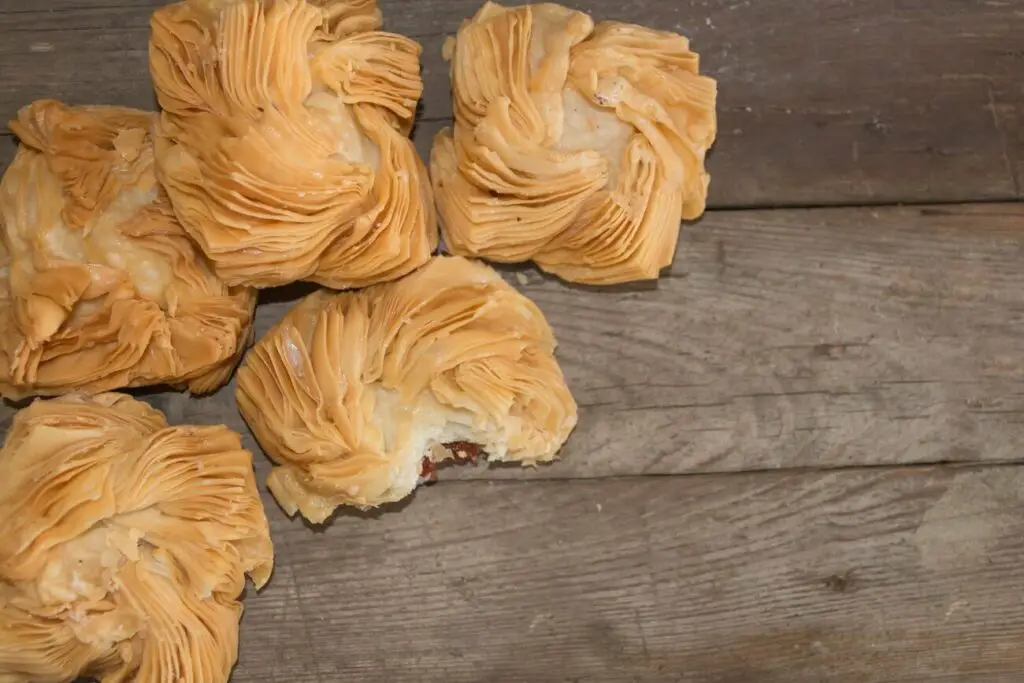
Pastelitos are a type of crisp pastry filled with dulce de membrillo (quince paste) or dulce de batata (sweet potato paste).
They’re fried or baked and coated in sugar. They are delicious – crunchy and sweet.
They’re sold in bakeries year-round, but they’re particularly popular on Revolution Day, on 25 May.
25. Medialunas
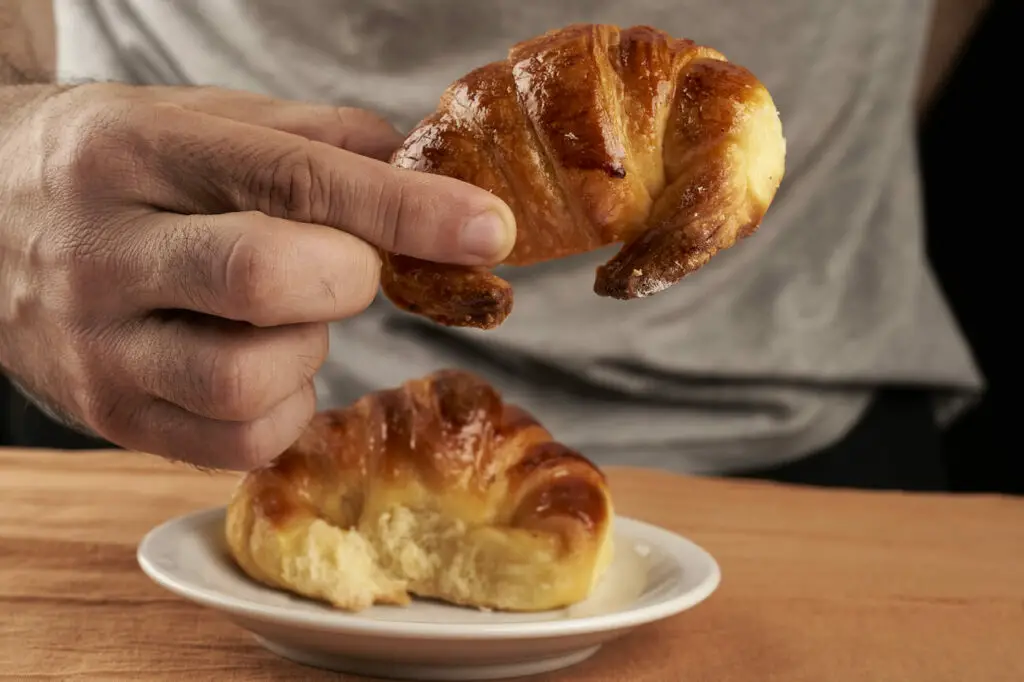
Argentines love sweet things for breakfast, and medialunas are one of the popular foods in Argentina for breakfast.
A type of sweet croissant, they’re flaky and buttery. They usually have a sweet glaze on them.
Every Wednesday our office had facturas (pastries) ordered in and I would gorge on medialunas throughout the day (again, not great for my teeth).
26. Tortas

Like every country, Argentina has its specialty cakes, or tortas as they’re called.
My favourite is torta de ricota, a sweet cheesecake-y cake made with ricotta that’s quite light.
Torta rogel is another Argentine classic: layers of pastry sandwiched together with dulce de leche and topped with meringue.
Chocotorta is a chocolate and dulce de leche layered cake made with cookies – an Argentine classic.
27. Flan mixto
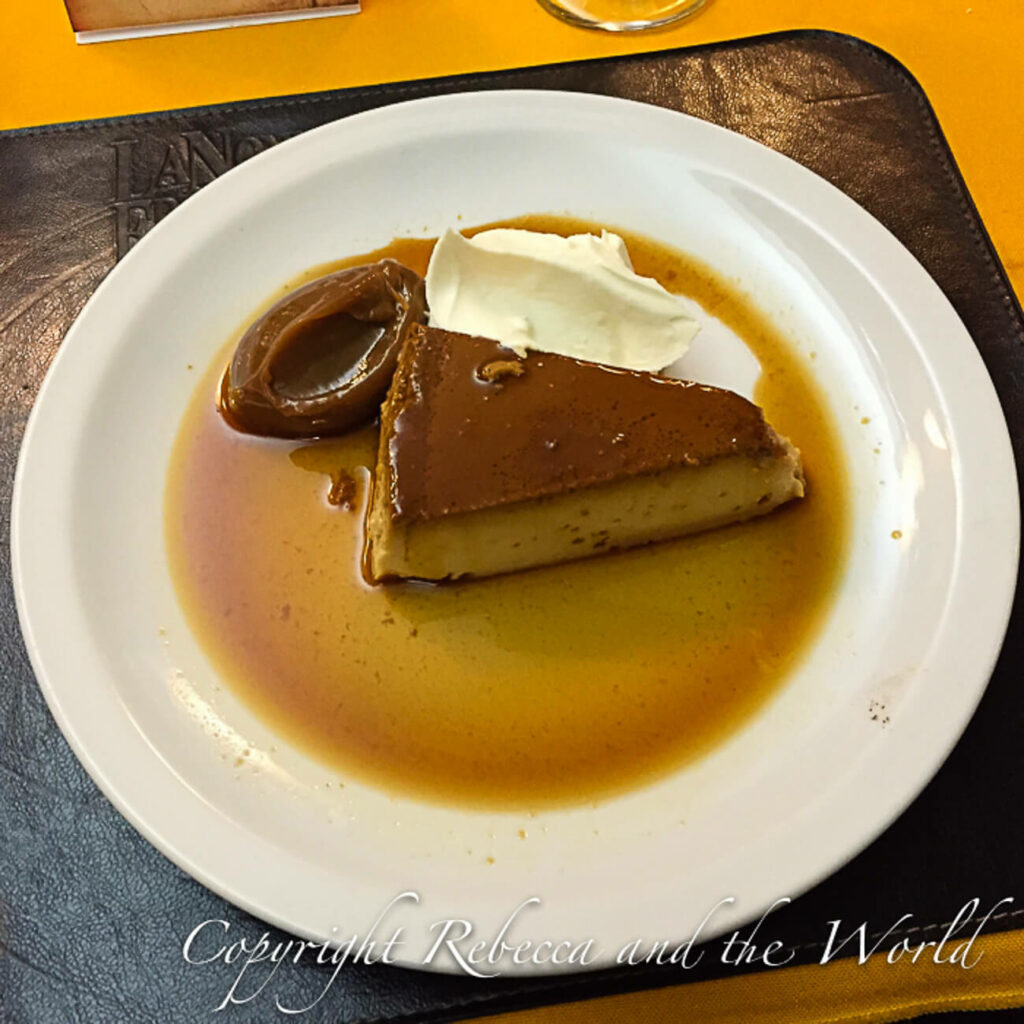
Take light and creamy flan and make it even better by adding lashings of dulce de leche and whipped cream.
Flan is a popular dessert in Argentina and you can have it solo or served as flan mixto – that’s the option with dulce de leche and cream on the side. It’ll cost you a little extra but it’s so worth it!
28. Panqueques con dulce de leche
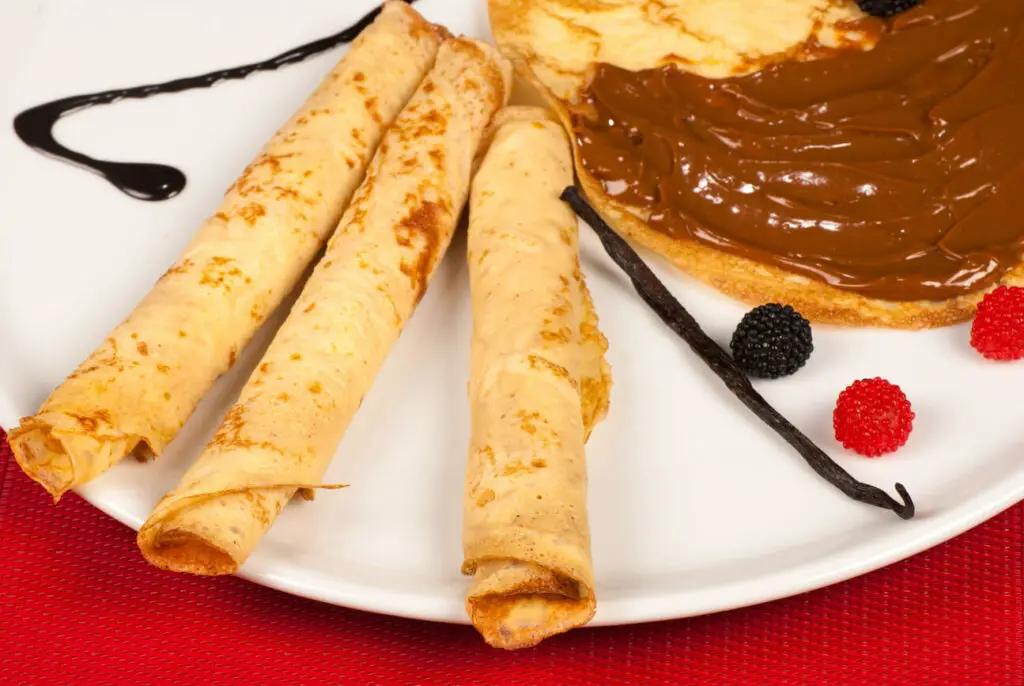
Panqueques con dulce de leche, or crepes filled with dulce de leche, are a popular dessert in Argentina.
They’re usually served with whipped cream or ice cream as well, and are the perfect way to end a meal.
Popular drinks in Argentina
Aside from Argentina’s famous wine – Malbec and Torrontés (best tried at the wineries in Cafayate) being the country’s most famed grapes – there are a couple of other drinks you should also try in Argentina.
29. Mate
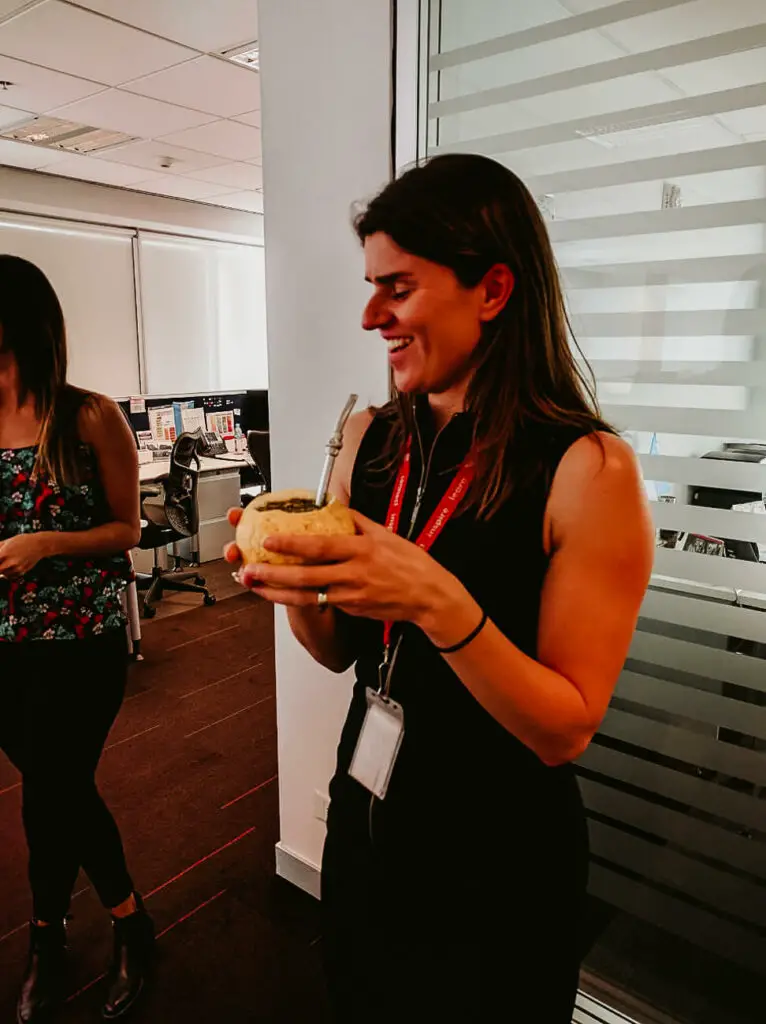
When you’re wandering around Argentina, you’re probably wondering what all those people are doing sipping out of the same cup.
They’re sharing yerba mate (pronounced mah-tay).
This bitter green tea is a staple of Argentinian culture. It’s made by steeping dried leaves of the yerba mate plant in hot water. It’s then sipped out of a mate (the cup/gourd) with a metal bombilla (straw).
Drinking mate is a social activity in Argentina and it’s often shared among friends and family. I’ve even seen strangers share mate in a government building – the person getting their papers checked shared it with the government worker behind the desk.
A colleague of mine even shared mate with the Pope – who’s Argentine – when he visited the Vatican!
I find mate to be very bitter, but it’s said to have many health benefits, including boosting energy and aiding digestion.
30. Fernet

While it’s an Italian liqueur, Argentines have a special affinity for Fernet.
This bitter liqueur is often consumed as a digestif after a meal. It’s made from a blend of herbs and spices and has a strong anise flavour.
In Argentina, Fernet is usually mixed with Coke or soda water and served over ice.
31. Submarino

I don’t drink coffee, so my hot drink of choice in Argentina was always a submarino.
Essentially a hot chocolate, you’ll get a cup of steaming milk with bars of chocolate that you melt into the milk. Kind of like a submarine sinking.
It’s a fun way to enjoy a hot chocolate. Plus, the name is just too cute!
Eating out in Argentina: Things to know
Before you head out to a restaurant in Argentina, there are a few things you should know about Argentine food culture.
Argentines eat late. In Argentina, the conventional dining hours might feel unorthodox to visitors. Typically, Argentinians enjoy their breakfast much later in the morning, with a cup of coffee and a medialuna. Dinner is a late-night affair here, with people usually eating between 9pm and 11pm, which can take some getting used to.
Tipping. Tipping isn’t compulsory in Argentina but it is customary. A 10% tip is a nice gesture. Tipping by credit card typically isn’t an option, so carry a bit of cash with you for this purpose. If you notice the term propina on your bill, a service charge may have already been included, but this isn’t common.
Cubierto. On your restaurant bill, you might notice an item called cubierto. This charge is for the bread, cutlery and table settings. This charge is for the establishment, not the wait staff, so don’t mistake it for a tip.
Service can be slow. Argentines enjoy their food – it’s not something to be eaten in a hurry. So don’t be surprised if your meal takes longer to arrive than you’re used to. Argentines also like to engage in sobremesa – long conversations over coffee and dessert that follow the meal.
How to order food in Argentina
If you want to attempt some Spanish when ordering at a restaurant in Buenos Aires, here are a few phrases to get you started.
To ask for a table when you enter a restaurant, say “Una mesa para dos, por favor.” Change the number depending on how many people are in your group (uno, dos, tres, quatro etc).
The first thing you’ll do in a restaurant in Buenos Aires is order drinks. The server will ask you something like “Qué van a tomar?” which loosely translates as “what would you like to drink?” Depending on where you are (and what time of day it is), you may ask for:
- “Un vaso de agua” – a glass of water
- “Un café” – a coffee
- “Una cerveza” – a beer
- “Un vaso de vino blanco / vino tinto” – a glass of white wine / red wine (or order “una botella” – a bottle)
After you’ve taken a look at the menu and figured out what you want, you can order by starting with one of the following phrases and finishing it with the name of the dish you want:
- “Quiero…” – I want…
- “Me gustaría…” – I would like…
- “Me das…” – Give me… (to English speakers, this sounds rude and direct, but it’s not!)
- “¿Me trae…?” – Could you bring me…?
When you’ve finished your meal and are ready to pay, ask: “La cuenta, por favor”.
To check if the restaurant takes credit cards, ask: “Acepta tarjeta?”
Argentina food tours in Buenos Aires
One of the best things to do in Buenos Aires is to take a food tour to learn more about Argentinian food and culture. Add one of these food tours to your Buenos Aires itinerary.
- Squarely aimed at tourists is one place worth visiting if this is your first time in Argentina. The Argentine Experience is where you’ll learn how to make empanadas and later chow down on a huge steak.
- Steak lover? Then a parrilla tour is for you!
- This new Buenos Aires food tour takes you on a walking tour to taste Argentine pizza.
- Want to learn to cook these popular foods in Argentina? Take a cooking lesson in Buenos Aires, where you’ll make empanadas, steak and ice cream.
Typical Argentinian Food: Final (delicious) thoughts
As someone who has spent a lot of time in Argentina and tried a LOT of the country’s delicious food, I can confidently say that the country has some of the best cuisine in the world. It’s worth travelling to Argentina just to try the food.
While Argentinian food can be meat and carb-heavy, there are plenty of traditional dishes that are lighter.
An aspect of Argentine cuisine that I appreciate is the way that meals are meant to be shared and enjoyed with others. Whether it’s a family gathering or a night out with friends, food is always a central part of socialising in Argentina.
If you’re planning a trip to Argentina, I highly recommend trying as many different dishes as possible. Don’t be afraid to step outside your comfort zone and try something new (like chinchulines and morcilla!) – you might just discover your new favourite food.
And if you’re not able to travel to Argentina anytime soon, there are plenty of Argentine restaurants around the world where you can sample some of these delicious dishes.
Popular food in Argentina: FAQs
What’s the typical meal schedule in Argentina?
In Argentina, lunch is the main meal of the day and is usually eaten between 12pm and 2pm. Dinner is typically eaten later in the evening, around 9pm or later. Many restaurants don’t open for dinner until 8pm or later, so be prepared to eat late!
Are there any vegetarian options in Argentine cuisine?
Yes, there are plenty of vegetarian options in Argentine cuisine such as locro, a hearty stew made with beans, corn and vegetables – it can be made without meat. Other popular dishes include humita, a savoury corn tamale wrapped in corn husks, and provoleta, grilled cheese that’s often served as a starter. There are also salads and tartas.
What’s the most popular street food in Argentina?
The most popular street food in Argentina is choripán, which is a grilled sausage served on a crusty bread roll. It’s often topped with chimichurri sauce, a tangy and flavourful sauce that’s a staple in Argentine cuisine.
What’s the national drink of Argentina?
The national drink of Argentina is mate, made by steeping dried leaves from the yerba mate plant in hot water. It’s served in a gourd with a metal straw and is shared among friends.
Did you find this article helpful? Consider buying me a coffee as a way to say thanks!
Which of these traditional Argentinian food dishes are you most looking forward to trying?
Related posts
Before you go… you might like these Argentina travel articles:
- Where to eat in Buenos Aires: 50+ Restaurants for your itinerary
- Why visit Argentina? 15 Reasons to travel to Argentina this year
- 101 Things to do in Buenos Aires
- Argentina itinerary ideas: How to spend 1-4 weeks in Argentina
- How to plan the perfect 2 weeks in Argentina
ARGENTINA TRIP ESSENTIALS
- Book your flight to Argentina online with Skyscanner. I like how this site allows you to find the cheapest days.
- Find a great hotel in Argentina. Check prices on Booking.com and Expedia online.
- Check out the huge range of day tours throughout Argentina on GetYourGuide or Viator. There’s something for everyone.
- Keep those bottles of wine you’ll be buying safe in these wine bags.
- A copy of the Lonely Planet guide to Argentina will be handy. Also pick up a Spanish language guidebook to help you navigate your visit.
- One thing I always purchase is travel insurance! Travel Insurance Master allows you to compare across multiple policy providers, while SafetyWing is great for long-term travellers and digital nomads.
PIN IT FOR LATER
Save this guide to the best Argentinian food to Pinterest for later.





